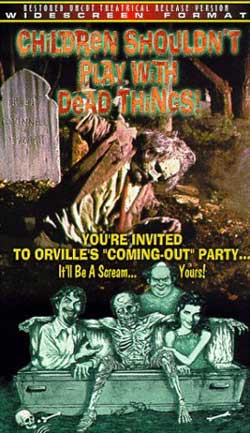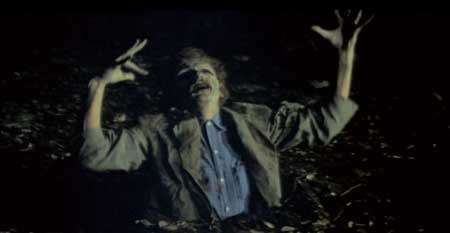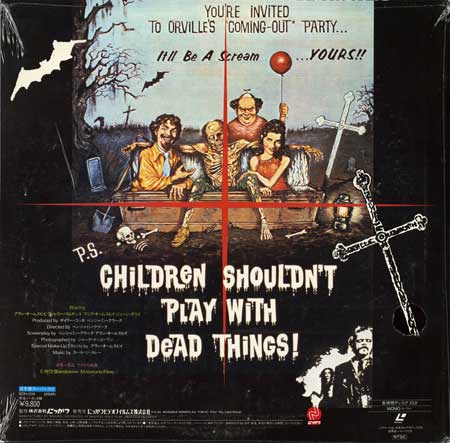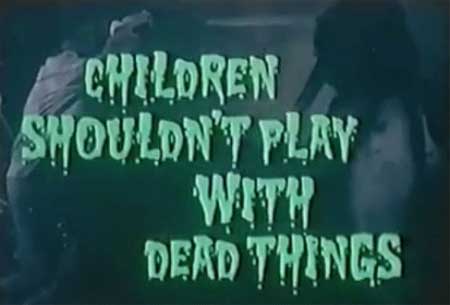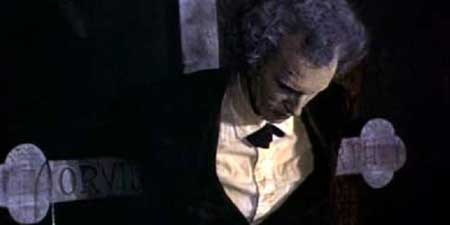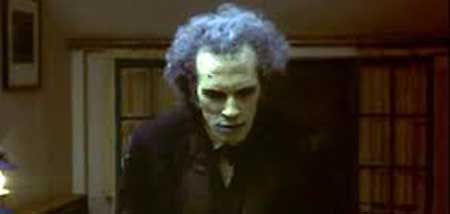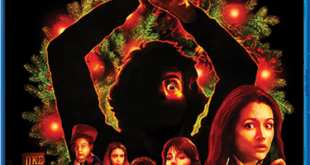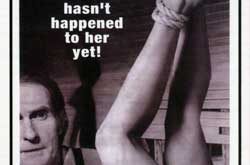Six friends dig up a corpse named Orville. They use it in a Satanic ritual to make the dead rise from their graves. Look out!!!
REVIEW:
Six members of a theater troupe sail to a spooky island cemetery and blaspheme the dead. The result: cannibalistic corpses sprout from their graves, hungry and not in the best of moods. Revenge turns out to be a dish best served warm—about 98.6 degrees Fahrenheit.
As a horror movie, this film is sub-par. But as a zombie movie, it’s above average. For its time, the makeup is convincing. The score (purposefully reminiscent of other B-movies of the period) is adequate, even if a little over the top. Though the art production has a sort of Scooby-Doo aura to it, the overall effect is creepy. Granted, the tempo is full of flaws. The dialog is mostly tedious. The incessant bickering amongst the characters is at times painful. But in between the banal exchanges and acerbic quips, there is humor (which isn’t surprising considering director Bob Clark went on to helm comedy classics such as A Christmas Story and Porky’s). Maybe it’s just comic relief from boredom, but it’s enough—barely—to pull the plot along until the zombies arrive. When they do, it’s a shocker. By no means is this a gore-fest, but there are enough gruesome moments, whether shown or implied, to satisfy fans of this sub-genre. And the zombies don’t just show up knocking on the door like some sleepwalking Avon Lady. Growling and roaring deafeningly, they claw their way out of the earth. Their intent is inexorable, their hatred and malice unmistakable. No, these aren’t just lumbering deadpan robots. They mean business!
Children Shouldn’t Play with Dead Things came out just five years after George Romero’s seminal flesh-eating zombie movie Night of the Living Dead, making comparisons between the two inevitable. More often than not, CSPWDT gets unfairly dismissed as an inferior copycat. Every film is somehow derivative, whether from a story, folklore, history or another film. For instance, all vampire movies are essentially the progeny of director F.W. Murnau’s Nosferatu, the first film adaptation of Bram Stoker’s novel Dracula (and that was arguably inspired by Sheridan Le Fanu’s novella Carmilla, James Malcolm Rymer’s serial story Varney the Vampire, and John William Polidori’s short story “The Vampyre,” which itself was based on an unfinished vampire story written by Lord Byron).
Being derivative is not the same thing as being a copycat. Though clearly derivative of its predecessor, CSPWDT is inferior but not a copycat. It’s in garish color. The zombies are fast (something not done until more than a decade later in the movie Return of the Living Dead). They are angry (their contorted visages reveal more about wrath and hate than an insatiate appetite for brains and guts). They are smart, at least in the sense that they use trickery to lure their victims from the shelter of a barricaded house and ambush them (not to mention that the film’s final shot of the undead boarding the troupe’s boat shows that they apparently have knowledge of sailing).Also, they don’t spread their condition like a contagious disease when they bite or kill a victim, which lends itself to another contrast between these two films: the origin of the zombies themselves.
In NOTLD, it’s science—a space probe returning from Venus contaminates the earth with cosmic radiation. In CSPWDT, it’s the supernatural—some kids dabble in the black arts and recite a spell that raises the dead. The departure from the science fiction or science gone awry angle was perhaps less a creative epiphany than a prerequisite of the era (it would seem that the Apollo 11 landing made the notion of a radiated space probe much less worrisome, but aren’t there always people who get uneasy when a mirror breaks or a black cat crosses their path—who, in short, fear the supernatural?). Still, this departure is a distinctive contrast. The characters are another. In NOTLD, they are victims of circumstance. In CSPWDT, they are an annoying ensemble of smart-alecks who are the cause of their own plight.
Children Shouldn’t Play with Dead Things (1973)
 Horror News | HNN Official Site | Horror Movies,Trailers, Reviews
Horror News | HNN Official Site | Horror Movies,Trailers, Reviews
